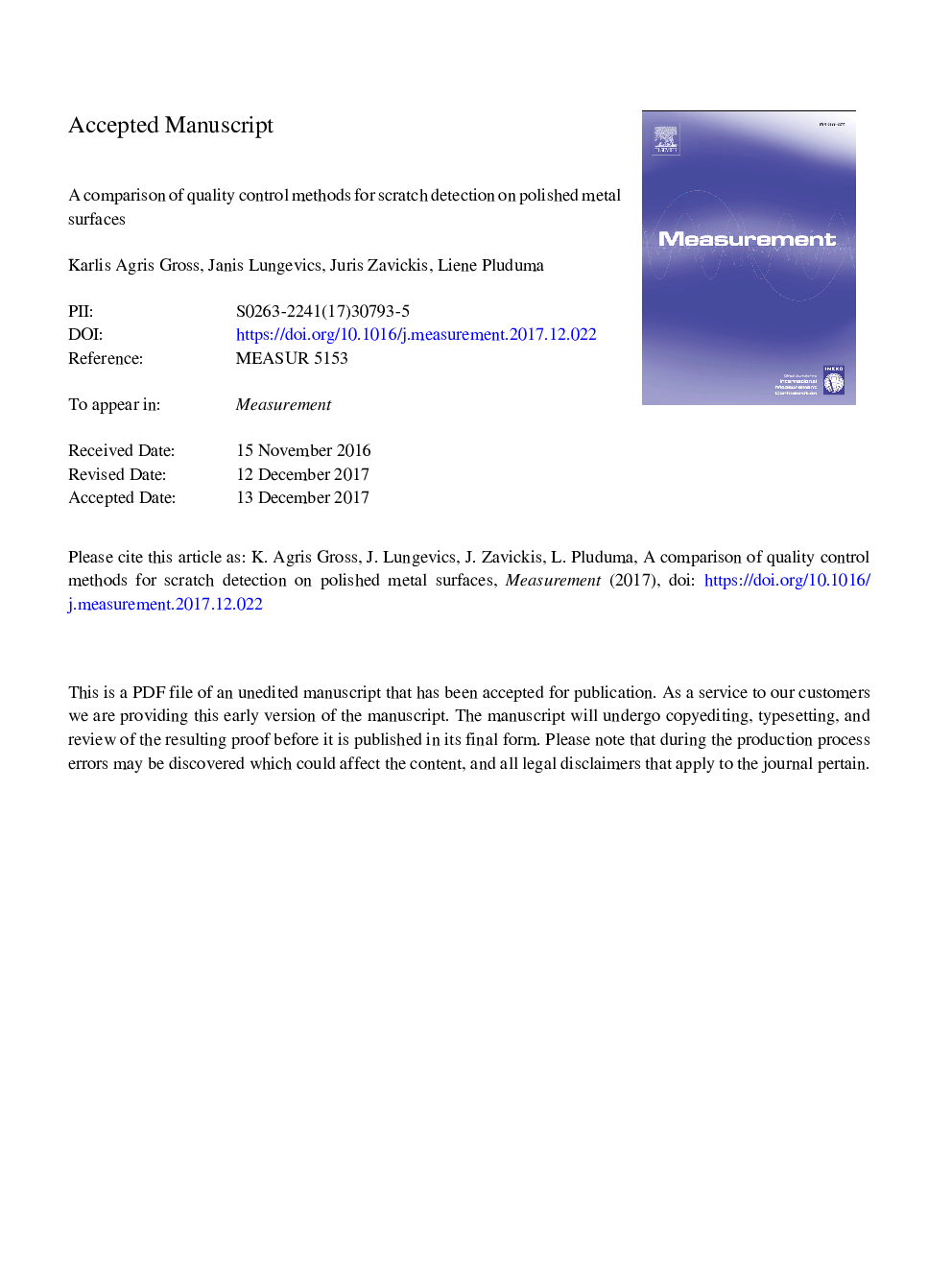| Article ID | Journal | Published Year | Pages | File Type |
|---|---|---|---|---|
| 7121911 | Measurement | 2018 | 21 Pages |
Abstract
Scratch detection and the location of the scratch on the surface is important in the quality control of multilayered, functional and polished surfaces. Visual examination in good lighting conditions has been previously used to detect scratches, but interest to see finer scratches and their location should consider use of the optical microscope, and compare it with other imaging methods at the same magnification. Stainless steel was polished, scratched and then one specific location analyzed at the same magnification with all methods to determine the level of scratch detection. Atomic force microscopy, as the technique with a higher resolution, was used to determine the mean depth of every scratch as a reference. An image was then recorded with the different techniques and the number of visible scratches counted. Profilometry did not clearly identify scratches due to limitation of the 2â¯Î¼m probe size. Light microscopy provided the fastest and most appropriate technique for quality control, detecting 70% of the scratches. Scanning electron microscopy only showed 35% of the scratches at the same magnification, but provided a good 2-D image of the scratch and the resulting metal pile-up.
Related Topics
Physical Sciences and Engineering
Engineering
Control and Systems Engineering
Authors
Karlis Agris Gross, Janis Lungevics, Juris Zavickis, Liene Pluduma,
